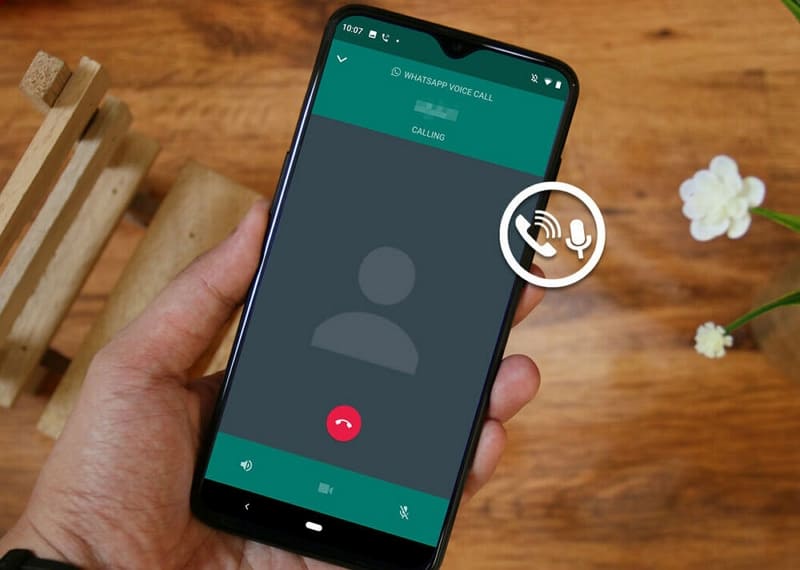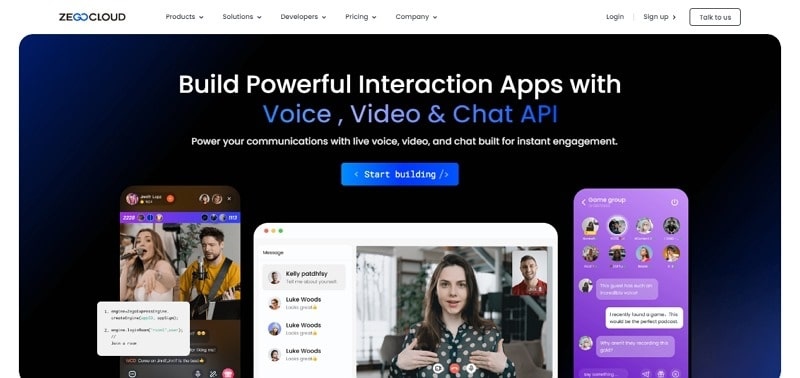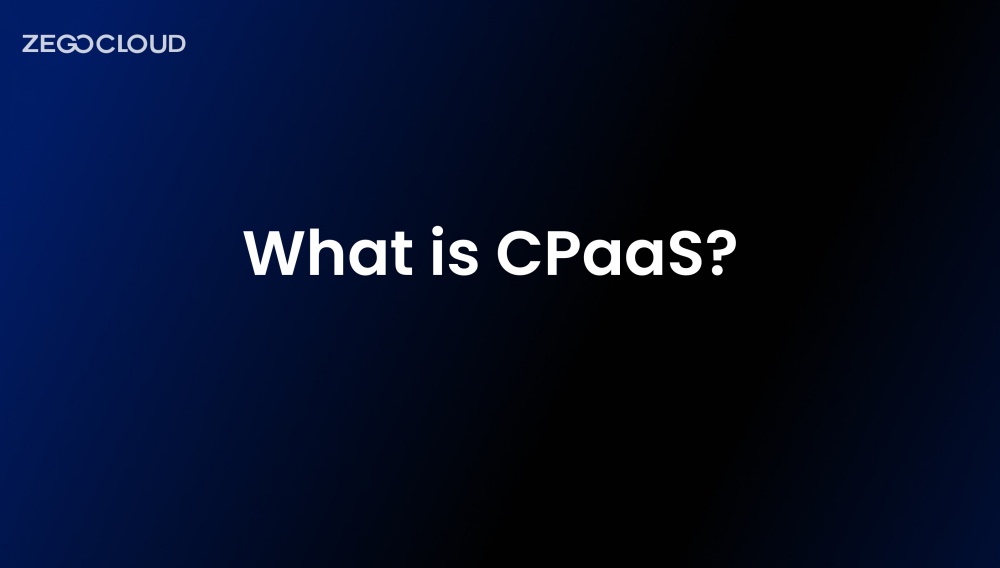Communication Platform as a Service, or CPaaS, lets developers integrate communication features in their applications without building backend infrastructure. It attracts companies with existing cloud-based technology stacks for customizing their communication frameworks and creating a unified customer experience. Anyhow, if you are curious about “what is CPaaS”, you should thoroughly read this article, as it explains everything related to it.
What is CPaaS?
CPaaS stands for communication platform as a service, a cloud-based platform for providing Application Programming Interfaces (API). Through CPaaS, users can fully customize their communication stack, as it offers features like voice calls, video conferencing, and SMS. Like CCaaS and UCaaS, it is “as a Service” for communication providers, which means it can be integrated into apps through APIs and SDKs.
Instead of buying complete solutions with predefined features, integrating some selected communication channels proves feasible and meets diverse business needs. CPaaS solutions include software tools, standard-based APIs, pre-built applications, and sample code with product documentation to help developers.
Benefits of CPaaS
Compared with other communication services, this solution provides scalability, flexibility, and cost-effectiveness. Let’s dig into some advantages of this technology, which massively attracts companies to communication solutions:
- Enhanced Scalability: To handle the increased demand, it can scale up usage and scale down again as the cost correlates with business volumes. Besides, it can remove obsolete features without an issue and ensure that your app meets clients’ changing needs.
- Save Developing Time: CPaaS accelerates development with pre-built APIs, which means quick integration of communication features in web or mobile apps. The developing teams using these services save human resources and time to market.
- Simplify Communication: Using CPaaS means centralizing communication where you don’t need to vendor for different features within this domain. This way, users can minimize errors, remove compatibility issues, and get better customer service because clients can communicate by any means.
- Faster and Cost-Efficient: This technology has a pay-as-you-go price model that saves money compared to overpaying upfront and other investment equipment. Additionally, instead of hiring developers to write and maintain infrastructure, CPaaS has a straightforward model of only paying for your chosen service.
- Easy to Integrate and Customize: If you want text chat but not video calling, you can customize features through CPaaS. Apart from being customizable, it is easy to integrate, and you don’t even need to subscribe for a bunch of extra services.
How Does CPaaS Work?
CPaaS companies rely on a complicated interplay between hardware, software, and network infrastructure, which initially seems difficult to comprehend. They are built on a microservices architecture, which means core functionalities like video and voice are broken into modular services. Moreover, their providers can handle complex backend infrastructure for the communication channels.
In this regard, CPaaS interacts with communication networks using various protocols, such as SIP for voice calls and WebRTC for video conferencing. Such protocols define how data is exchanged and transmitted among networks and CPaaS platforms. Furthermore, CPaaS uses media servers to process communication data and manage tasks like audio and video transcoding.
Despite that, it implements robust encryption techniques to protect transmitted data. The authentication protocols ensure authorized users’ access to communication features. CPaaS solutions constantly monitor system health and track API usage, crucial to providing quality service.
CPaaS vs UCaaS
Developers often confuse CPaaS with UCaaS. They differ in several ways while being similar regarding aims and purpose. Anyhow, let’s draw a tabular comparison of them to clarify ambiguities and better understand CPaaS technologies:
| CPaaS | UCaaS | |
|---|---|---|
| Definition | A cloud-based platform that allows developers to integrate communication features in-app via APIs | A cloud-based platform that has a comprehensive suite of communication and collaboration under a unified interface. |
| Targeted Users | Developers and enterprises looking for custom communication features | Businesses, enterprises, and organizations looking to enhance internal or external communication |
| Development Efforts | Yes | No |
| Use Cases | Adding chat, video, and voice calling features in apps | Wide communication, collaboration, and remote work solutions |
| Implementation | Require developer efforts to integrate communication features into apps | Ready-to-use solutions with minimal setups |
| Cost Structure | Pay-as-you-go | Subscription-based pricing |
| Scalable | Yes | No |
| Example of Providers | Vonage, Twilio, Plivo | Microsoft Teams, Zoom, RingCentral |
| Integration | Integrated into existing web apps | Integration with existing business tools but with less customization |
| Customization | Yes | No |
Key CPaaS Functions
Knowing about CPaaS will empower businesses to introduce advanced communication technologies with efficiency and innovation. That’s why below is a discussion of its solutions and their integral functions, such as voice calling and online meetings:
1. Text Messaging (SMS)
Building SMS communication into software means sending and receiving text messages to increase customer engagement. Developers can add instant messaging functions, including push notifications and alerts, to their apps.

2. Voice Calling
Without much programming, users can embed incoming and outgoing calling features into their mobile or web applications. It may also include voice recording and group calling for group discussions, training, and meetings.

3. Video Conferencing
Some of the key functions of CPaaS include a video conferencing service that facilitates remote collaboration and virtual meetings. Furthermore, it involves live streaming, video recording, and webinar broadcasting to a larger audience.

4. Authentications and Security
To enhance security, CPaaS providers have two-factor authentication that requires users to fill out verification through SMS codes or passwords. These verification services or identities ensure authorized access to communication between devices while preventing hacking.

5. Multimedia Services
Not all CPaaS solutions offer multimedia services, yet some facilitate the transformation of media in apps. They let users of apps conversate by sending files, videos, photos, or stickers in chat for an immersive communication experience.
CPaaS Use Cases
Now that you are familiar with the fact that CPaaS primarily aims to enrich customer communication. However, the use cases may vary due to the diverse communication needs, while the main purpose will remain the same. Hence, let’s figure out some of the common use cases to expand your knowledge related to this technology:
- Healthcare: In telepathy, CPaaS solutions provide video consultations between doctors and patients on their pre-designed app. Besides, the users of such apps can set automated reminders for upcoming appointments via SMS.
- Education: It can provide remote learning through video conferences and live streaming to many students worldwide. Additionally, students can access important announcements, assignment reminders, or fee-submission confirmations through SMS.
- Banking and Finance: CPaaS technologies can send real-time transaction alerts to clients through SMS and email. Furthermore, they push notifications for withdrawals and customer verifications during account setup through SMS and voice calls.
- Travel and E-Commerce: It involves sending SM or Email notifications for booking confirmations to travelers. An e-commerce app, users can avail of 24/7 support through chat or voice calls regarding cancelations, inquiries, and orders.
What Should We Expect to See from the Growth in CPaaS?
Like every other technology, CPaaS solutions are also undergoing significant enhancements. Soon, they will allow businesses to provide seamless omnichannel communication experiences on a cohesive platform by embedding voice, chat, and video calling features. There are expectations of getting human-like AI interactions in the app to automate routine tasks.
CPaaS technologies may enhance security features, such as end-to-end encryption and advanced authentication methods. Moreover, you can expect robust scalability options and flexible deployment models, handling communication loads effectively.
How CPaaS Solutions Can Help You Scale Your Business
CPaaS (Communications Platform as a Service) solutions offer powerful tools that allow businesses to scale efficiently by integrating communication features directly into their applications. Here are some key ways that can help you grow your business:
1. Cost Efficiency
With CPaaS, you don’t need to invest in expensive infrastructure or dedicated hardware to build communication systems. By leveraging APIs, you can pay only for the services you use, reducing upfront costs and allowing for flexible scaling as your user base grows.
2. Enhanced Customer Engagement
CPaaS solutions enable real-time communication features like voice, video, and messaging, which help businesses engage more effectively with their customers. By embedding these features directly into your app or website, you can foster social engagement, creating seamless communication experiences that enhance customer satisfaction and retention.
3. Customizable and Flexible Solutions
CPaaS platforms offer flexibility by allowing you to choose and implement only the communication features you need. Whether it’s video calls, SMS, or live chat, you can tailor the solution to fit your business needs, making it easier to scale based on customer demand.
4. Global Reach
CPaaS providers offer services that can be used across borders, helping you expand your business globally. By integrating international voice and messaging capabilities, you can connect with customers around the world without having to manage complex telecommunication networks.
5. Quick and Easy Implementation
CPaaS platforms provide APIs that simplify the integration of communication tools into your existing systems. This allows you to add new features quickly without lengthy development cycles, accelerating your ability to scale and respond to market changes.
6. Improved Operational Efficiency
By automating communication processes (e.g., customer support chatbots, SMS notifications, or appointment reminders), CPaaS solutions improve operational efficiency. This helps businesses handle a larger volume of interactions without increasing costs, making scaling more manageable.
Empowering Real-Time Communication with ZEGOCLOUD CPaaS Solutions
If you wish to know an exceptional CPaaS provider, ZEGOCLOUD is the first recommended. It can help you build powerful communication apps with developer-friendly APIs and SDKs. Instead of building from scratch, developers can embed a few lines of code and use more than 20 pre-built UIKits. This way, one can focus more on their core business functions in apps for health, education, or fitness sectors.

Notably, it brings one-on-one voice call APIs and SDKs to facilitate crystal-clear audio calling with innovative AI noise reduction abilities. It also has an in-app chat API that lets users share media, files, and emojis to make the conversations interactive. ZEGOCLOUD can even provide live streaming and video calling APIs with screen sharing, co-hosting, virtual background, and face beautification features.
Conclusion
In conclusion, CPaaS is a powerful tool for businesses and developers looking to integrate real-time communication features into their applications. By providing flexible APIs for voice, video, messaging, and more, CPaaS eliminates the need for complex infrastructure and offers a cost-effective, scalable solution. Whether you’re looking to improve customer engagement, streamline operations, or enhance user experience, CPaaS delivers the tools needed to build custom communication solutions that meet the evolving needs of today’s digital landscape.
Read more:
FAQ
Q1: Is Zoom a CPaaS?
Zoom primarily offers UCaaS (Unified Communications as a Service) through its video conferencing and collaboration tools. However, Zoom also provides CPaaS capabilities through its Zoom Video SDK, which allows developers to integrate Zoom’s video and audio features into their own applications.
Q2: What is the difference between CPaaS and PaaS?
CPaaS (Communications Platform as a Service) provides APIs for adding communication features like voice, video, and messaging to apps, whereas PaaS (Platform as a Service) offers a complete platform for developers to build, deploy, and manage applications without dealing with the underlying infrastructure. CPaaS focuses on communication, while PaaS offers a broader range of development and deployment tools.
Q3: How secure is CPaaS for handling communication data?
Most CPaaS providers implement high-level security protocols, including end-to-end encryption, secure authentication methods, and compliance with global privacy standards (e.g., GDPR). Developers can ensure communication security by using these built-in features when integrating CPaaS.
Let’s Build APP Together
Start building with real-time video, voice & chat SDK for apps today!










